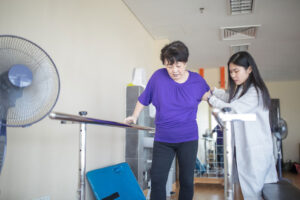What You Need to Know About Stroke Rehabilitation

Stroke affects a part of the brain. With rehabilitation, it can help you regain independence and improve the quality of your life. However, recovery depends on the severity of the stroke complications and a person’s ability to recuperate.
Stroke Rehabilitation: What’s Involved in the Process?
Stroke rehabilitation involves different approaches. As mentioned, it can vary depending on the type of complication and a person’s ability to recover. It will also depend on the part of the body affected by it.
Here are the physical activities included in stroke rehabilitation:
- Motor-skill exercises: Help improve muscle strength and coordination. Some may even have therapy to help strengthen swallowing
- Mobility training: This involves mobility aids like canes, walker, wheelchair, or an ankle brace
- Constraint-induced therapy: This is when an unaffected limb is restrained while you practice moving the affected limb to improve its function
- Range-of-motion: This involves certain exercises and treatments that can ease muscle tension and help a person regain their range of motion
Aside from physical activities, it may also involve technology, such as:
- Functional electrical stimulation: This is where electricity is applied to weakened muscles to make them contract. By doing so, it will help re-educate the muscles
- Robotic technology: This involves the use of mechanical devices to assist with impaired limbs while performing repetitive motions to help the limbs regain their strength and function
- Wireless technology: This is an activity monitor to help increase post-stroke activities
- Virtual reality: This is when video games are used, along with other computer-based therapies
Now, there are also cognitive and emotional activities, such as:
- Therapy for cognitive disorders: This involves occupational and speech therapies that help stroke patients who lost their cognitive abilities
- Communication disorders therapy: This involves speech therapy that helps stroke patient who has lost their abilities in speaking, listening, comprehension, and writing
- Psychological evaluation and treatment: This is when stroke patients are tested for their emotional adjustment. In this case, counseling or support groups may be involved
- Medications: Oftentimes, stroke patients are prescribed antidepressants or any medications that can induce alertness and movement
How Long Does It Last
You might be wondering how a stroke rehabilitation will last. The answer to this is, it depends. Again, it will be based on the stroke severity and other related complications.
Some stroke survivors recover quickly, while others need long-term rehabilitation that can last for months or even years after the stroke.
Where to Have It
If you’re wondering where you can have this done, there are various facilities available. There are inpatient units that are either part of a larger hospital or clinic or freestanding where patients can stay up to weeks as part of an intensive rehabilitation program. On the other hand, there are outpatient units as well where patients will only spend a few hours in the facility several times a week.
Home-based programs and skilled nursing facilities are available, too. The place where the rehabilitation will be done will depend, again, on the severity of the stroke and patient preference.
Conclusion
Knowing how stroke rehabilitation works and where the patient can have it is crucial, especially if you have a loved one who suffered from it. Receiving the best care is important to help with full recovery that can improve the patient’s quality of life.
If you need first-rate stroke rehabilitation services, trust Morristown HC. We provide the best care possible to help your loved one fully recover and get back on track. Call us today to schedule your personal tour!